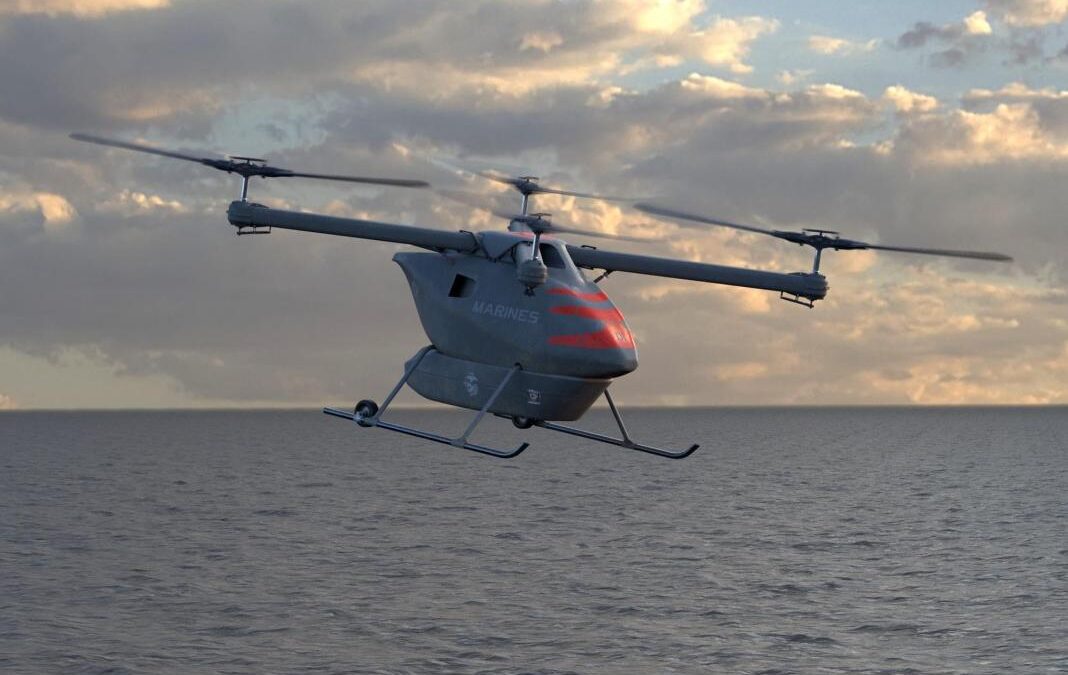“…Kaman Corporation (NYSE: KAMN) today unveiled the KARGO UAV, the newest addition to its family of purpose-built, autonomous unmanned systems designed to be the new standard for expeditionary logistics. Built with the U.S. Armed Forces future operating concepts in mind, the KARGO UAV offers a rugged design for easy transport and deployment. The system’s compact form-factor fits in a standard shipping container and is designed to be unloaded and operated by as few as two people.
“The Kaman KARGO UAV is the only system of its class that is purpose-built to provide deployed Marines, Sailors, Airmen, Soldiers, and Coast Guard autonomous resupply in the lethal, fluid combat environment that future military operations will entail or for regular logistics missions. Our deployed service men and woman have persistent logistics challenges that we are answering with this reliable, maintainable and affordable solution,” said Ian Walsh, CEO of Kaman Corporation.
Designed to provide cost-effective cargo hauling in its conformal pod or external sling load configuration, the KARGO UAV will self-deploy with no payload up to 523 nautical miles with max lifting capacity of 800lbs. This size and class vehicle also has multiple commercial applications and is part of a growth strategy involving a family of purpose built KARGO vehicles for multiple and repeatable missions.
Over the past six months, flight development testing of a scaled KARGO UAV demonstrator has been completed to prove out the air vehicle design, and flight-testing of a full-scale autonomous vehicle is planned for 2022. The KARGO UAV leverages commercial off-the-shelf components as well as thousands of hours of automated and autonomous flight data from Kaman’s K-MAX TITAN program, to reduce schedule and technical risk.
Kaman selected Near Earth Autonomy as a partner on the pilot KARGO UAV program. Leveraging ongoing and concurrent collaboration between the two companies on the U.S. Marines Corps K-MAX TITAN UAS, Near Earth will provide obstacle avoidance and other technologies such as precision landing, sense and avoid, and navigation in a GPS-denied environment.
